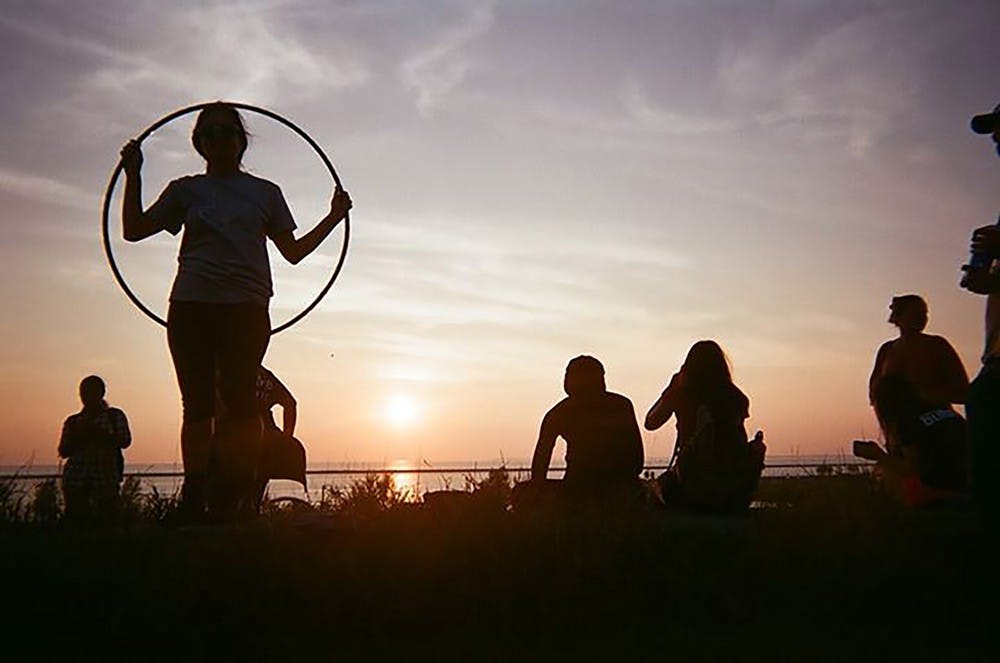Except for a general store and a few volunteers, Cayo Costa State Park is largely uninhabited. There is no hot water, electricity or housing.
But this spring break, 16 UB students will be flocking to the island just off the Gulf Coast.
“We don’t even use watches,” said Andrew Charbonneau, a sophomore environmental engineering major. “That way, we can really be on island time. You’re able to just forget everything and reset.”
Charbonneau is traveling as part of an alternative spring break program with the Outdoor Adventure Club. Alternative break programs coordinated through clubs and programs at UB offer students travel opportunities on a tight budget for fall, winter and spring breaks. This year’s spring break trips are ranging from a week of camping on a remote Floridian island, to spending a week on a Sioux Native American reservation in South Dakota.
Members of the club will be traveling to Fort Myers, Florida on March 13, where they’ll take a ferry to Cayo Costa State Park, an island off of the gulf coast, for a week of camping, hiking and kayaking. Except for a general store and some volunteers, the island has a small population. The trip costs $160, which covers travel, food and camping expenses.
“After having so much fun on last year’s trip, we were like, ‘Let’s just make this easy – we’re going straight back to the island,’” Charbonneau said.
With primitive conditions on the island including no hot water, electricity, or housing, Outdoor Adventure Club officers also have a no-electronics policy for the trip.
There are about 7 miles of beach on the west side of the island, and last year students hiked trails leading over to the north side of the island, bringing inflatable kayaks to dock off of Manatee bay and see a “whole bunch of manatees,” according to Charbonneau. To join next year’s trip through the club, students must go through a competitive application process in the fall.
Another alternative spring break trip through the community service club on campus, Circle K, is hosting 15 people to travel to South Palm Beach Florida on Friday for a week of building 20 to 25 housing developments through Habitat for Humanity.
Marykate Waringa, president of Circle K, group leader for the trip and a seniorbusiness administration major, said alternative spring breaks give students an opportunity to serve a community at an extremely affordable price.
“I remember when I was a student, trips cost anywhere from $500 to a couple of thousand dollars. Ours is $300 for the entire week,” Waringa said.
The application process to go on these trips is becoming increasingly competitive. Circle K looks for students who have volunteered a certain number of hours and attended a certain amount of events, and students who have become Circle K International Leaders by paying their dues.
The Office of Student Engagement is hosting a brand new trip this year, flying students out on Saturday to the Pine Ridge Indian reservation in South Dakota. Those students will spend the week learning about Sioux Native American culture and helping with different projects on their reservation.
John Maher, a junior engineering physics major, went on the Office of Student Engagement’s spring break trip to the Dominican Republic and had such a great experience he is now an a student leader for this year’s trip.
“I’m excited to see this American landscape with people comparable to a third world country’s,” Maher said. “We’ll be helping through volunteering, but will also be growing as a people and learning about a new culture without even leaving American soil.”
The Alternative Break applications for this year are closed. In August, students can check for information on new available trips for the 2015-16 year. The cost for trips range from $250 to $1,600 depending on the costs of trip and transportation. Students will travel as a group to their specified destination with the staff advisers.
email: news@ubspectrum.com
Katie Coleman is a assistant news editor and can be contacted at katie.coleman@ubspectrum.com





